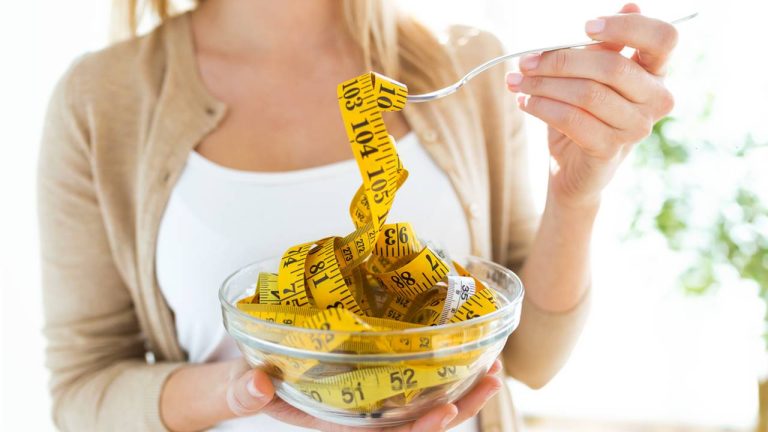
Calories are on everyone’s lips: many topics and myths circulate around them. In practice, they provide valuable but not so fundamental information.
Calories are still in the eye of the hurricane. The ultimate reason is in the oversized value that is given to body image and the concrete model of slenderness that we have all accepted as an ideal figure.

We have also learned that an important factor contributing to the final design of the figure is diet, and in particular energy balance, that is, the relationship between the calories that are ingested and those that the body expends. This is an important factor, certainly, but not the only one.
The history of calories began with the French chemist Lavoisier, when he demonstrated in the eighteenth century that the life of organisms is only possible thanks to the combustion of food in the presence of oxygen.
He invented the calorimeter, a device for determining the specific heat of substances. Thanks to this, it has been possible to measure and express in the form of calories the amount of energy contained in food and that consumed by the body for its functions.
In practice, in the field of nutrition and especially in colloquial language, the kilo calorie (kcal) is used less and less, and for convenience we talk about calories, as if it were the same. Thus, when it is said that 1 gram of sugar contains 4 calories, it is actually 4 kilocalories.
HOW MANY CALORIES SHOULD YOU EAT A DAY?
Today it is admitted that an adult man with a regular physical activity has an energy expenditure of about 2,700 kilocalories per day (2,000 in the case of women).
This expenditure includes basal metabolism (to maintain basic body functions), specific dynamic action (for digestion and absorption of food) and muscle activity.
Under usual conditions, carbohydrates should provide 50 to 60% of the total caloric value of the diet, fats from 30 to 35% and proteins from 12 to 15%.
Maintaining a caloric balance is essential. Quantitative imbalances lead to weight gain or loss and qualitative imbalances, nutritional deficiencies or excesses as well as metabolic disorders.
The decrease in activities that require movement thanks to the improvement of technological resources has led to daily caloric needs being lower than in the past. For example, it is not the same to plow a field with a tractor than manually or to walk than by car.
WHAT SHOULD THE CALORIE DISTRIBUTION LOOK LIKE?
At present it is recommended that breakfast provides 20-25% of the total daily calories, that the midday meal provides 40-45% and dinner, 30-35%. This is a good formula to ensure energy and nutritional balance. If you decide to have a snack, you can lighten lunch or dinner.
DO CHILDREN NEED MORE CALORIES?
Yes, since to the expenses of the functions of the organism and physical activity must be added those related to growth, that is, the formation of new tissues that allow them to increase in size and volume.
Pregnant women and nursing mothers also need a higher caloric intake.
DOES CALORIC EXPENDITURE CHANGE WITH AGE?
With age, the expenditure of the two main items related to energy consumption is reduced: basal metabolism and physical activity. Each case is different but it is estimated that by the age of 70 caloric needs are reduced by 20% in men and 15% in women.
HOW MANY KCAL DOES 1 G OF CARBOHYDRATES HAVE?
In general, the less water and the more fats and carbohydrates food contains, the more calories it provides.
Fats are the most caloric nutrient: 9 kilocalories per gram, while carbohydrates provide 4 kilocalories per gram, the same as proteins, although the function of these is not to supply energy.
WHAT IS A HYPOCALORIC DIET?
The one that provides less energy than the body needs, so that the missing energy is provided by the body’s own reserves, particularly those of fats. In this sense, a very common proposal is to recommend the intake of 500 calories per day less than those supposedly needed.
WHAT ARE “EMPTY CALORIES”?
It is a concept more graphic than scientific, but it has acquired acceptance. It refers to foods that provide energy, or calories, but are devoid, or “empty,” of micronutrients such as vitamins and minerals, or fiber. The paradigm is refined white sugar.
HOW IS CALORIE INTAKE REDUCED?
Reducing the consumption of foods that contain them. But care must be taken not to decrease the intake of essential nutrients at the same time in a way that jeopardizes its balance. It is best to reduce the consumption of superfluous and very energetic foods, such as sugar and fats.
CALORIES FROM SOME FOODS (CONTENT PER 100 G RAW FOOD, UNLESS OTHERWISE STATED)
- Olive oil: 897 kcal
- Walnut: 666 kcal
- Almond: 599 kcal
- Milk chocolate: 526 kcal
- Sugar: 400 kcal
- Brown rice: 348 kcal
- Dried beans: 312 kcal
- Lentils: 310 kcal
- Chickpeas: 305 kcal
- Date: 273 kcal
- Raisin 267 kcal
- French fries: 264 kcal
- Wheat bread: 238 kcal
- Avocado: 223 kcal
- Banana: 81 kcal
- White grape: 73 kcal
- Boiled potato: 70 kcal
- Apple: 50 kcal
- Green beans: 35 kcal
- Carrot: 27 kcal
- Zucchini: 19 kcal
- Spinach: 18 kcal
Raw tomato: 17 kcal